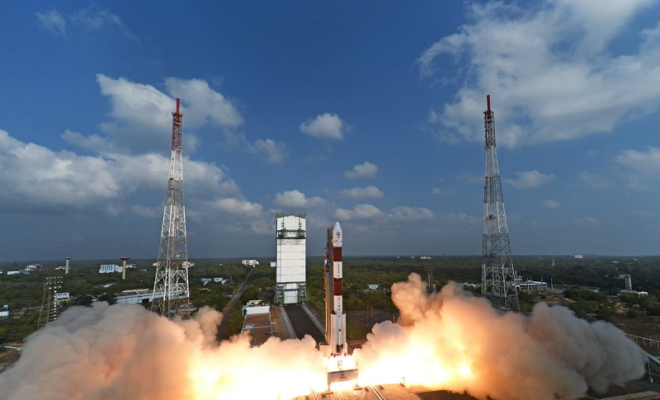ISRO Successfully Tests Hypersonic Vehicle & Meets All Targets

ISRO successfully conducted a joint hypersonic vehicle test along with HQ IDS. The joint hypersonic vehicle trial met with all predetermined targets.
Indian Space Research Organisation (ISRO) announced on Friday that its joint test of hypersonic vehicles in conjunction with Headquarters of the Integrated Defense Staff (HQ IDS) was successful.
A hypersonic vehicle could be an aircraft or missile capable of traveling at a speed five times faster than sound, or more than Mach 5.
It is considered to be an advanced technology and various countries such as China, India, Russia and America have been trying to enhance the performance to use hypersonic weapons.
The nation’s most prestigious space agency released an announcement that said the hypersonic vehicle trial jointly conducted met the predetermined goals.
An ISRO official Twitter account stated: “ISRO and JSIIC have collaborated to conduct hypersonic vehicle tests. The tests met all the required parameters and proved the capabilities of hypersonic vehicles.”
The Indian Space Agency has been working to develop hypersonic missiles, in conjunction with Russia.
Indian scientists are working on a plan that will create an indigenous dual-capable hypersonic cruiser as part of the Hypersonic Technology Demonstrator Vehicle (TDV) program.
According to reports, it is believed that the Indian native missile would be equipped with the capability of firing nuclear weapons as well as conventional weapons.
ISRO is also completing the initial blowdown test of the new Trisonic Wind Tunnel at the Vikram Sarabhai Space Centre (VSSC) The space agency reported.
Trisonic Wind Tunnel Trisonic Wind Tunnel is a system that is used to assist in an aerodynamic model of rockets as well as spacecrafts for re-entry by evaluating moments, forces as well as load distribution and keeping pressures and acoustic levels in an scaled model.
The tunnel measures an overall length of approximately 160 meters and an ultimate cross-section in the range of 5.4 meters.
It can be used to test various space vehicles across three flight modes which are: below the speed sound and in the direction of sound or above it. That’s the reason behind its name ‘trisonic wind tunnel’.
The tunnel simulates flight conditions ranging from 0.2 times speed (68 milliseconds) up to 4 times the speed sound (1360 milliseconds),” read the statement released by ISRO at its website.



